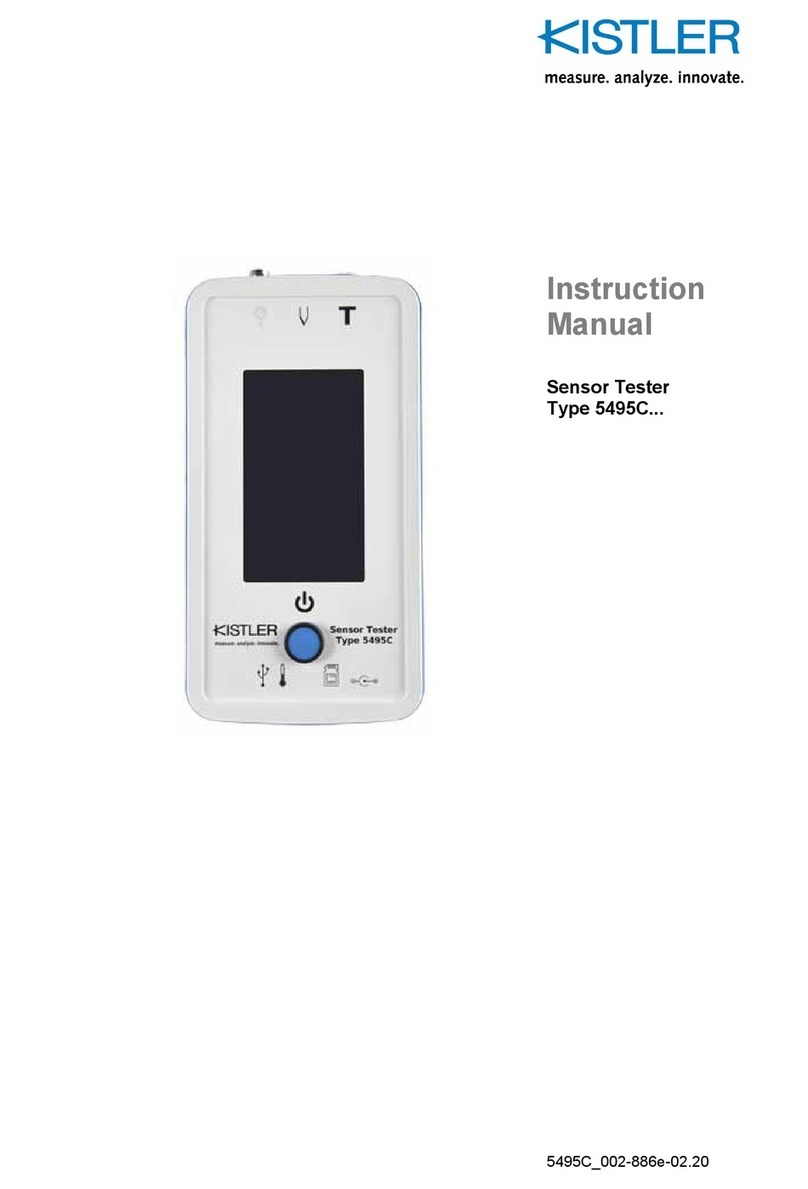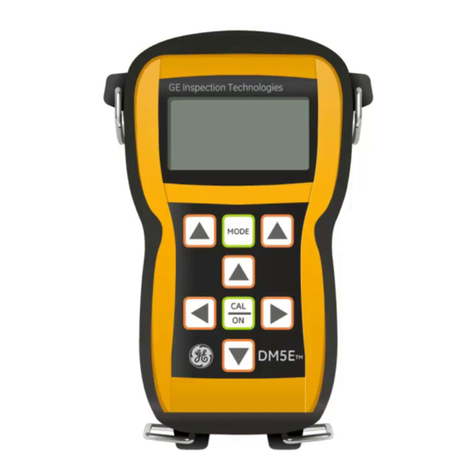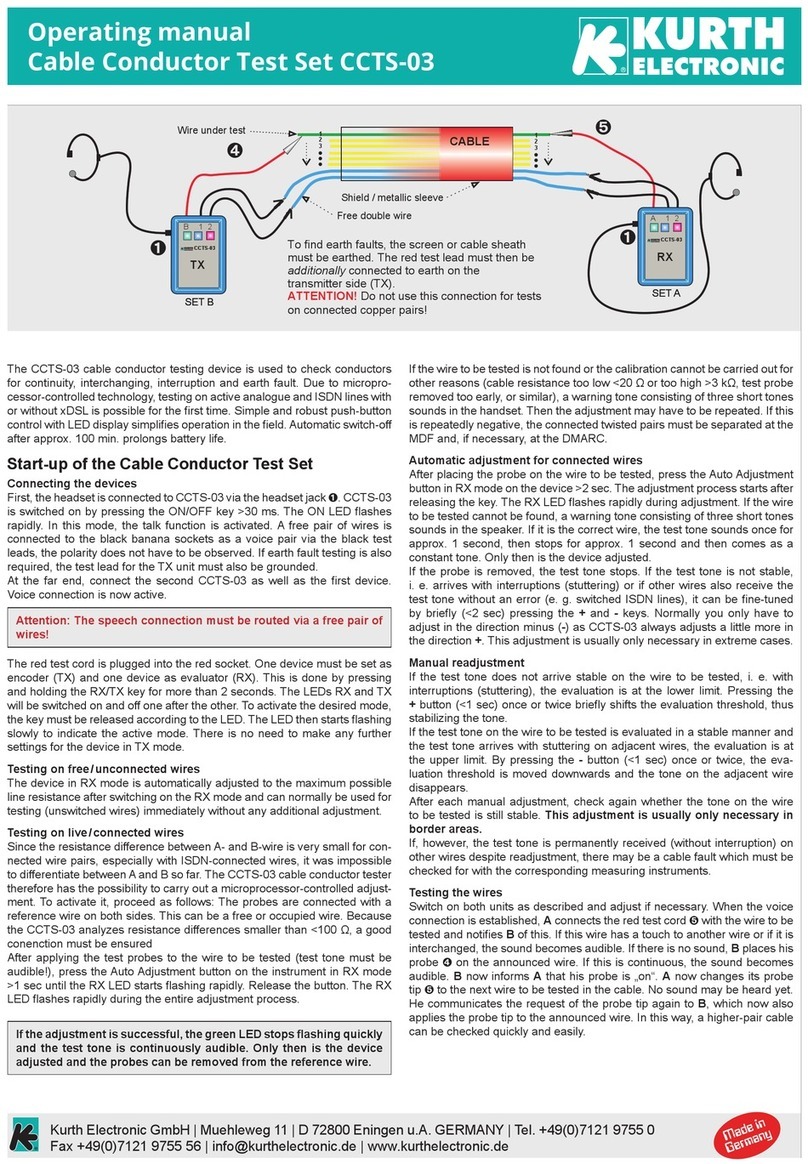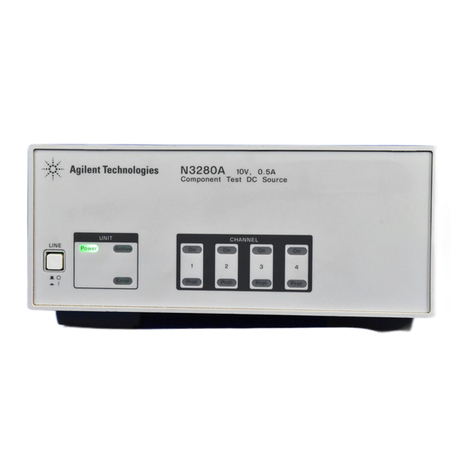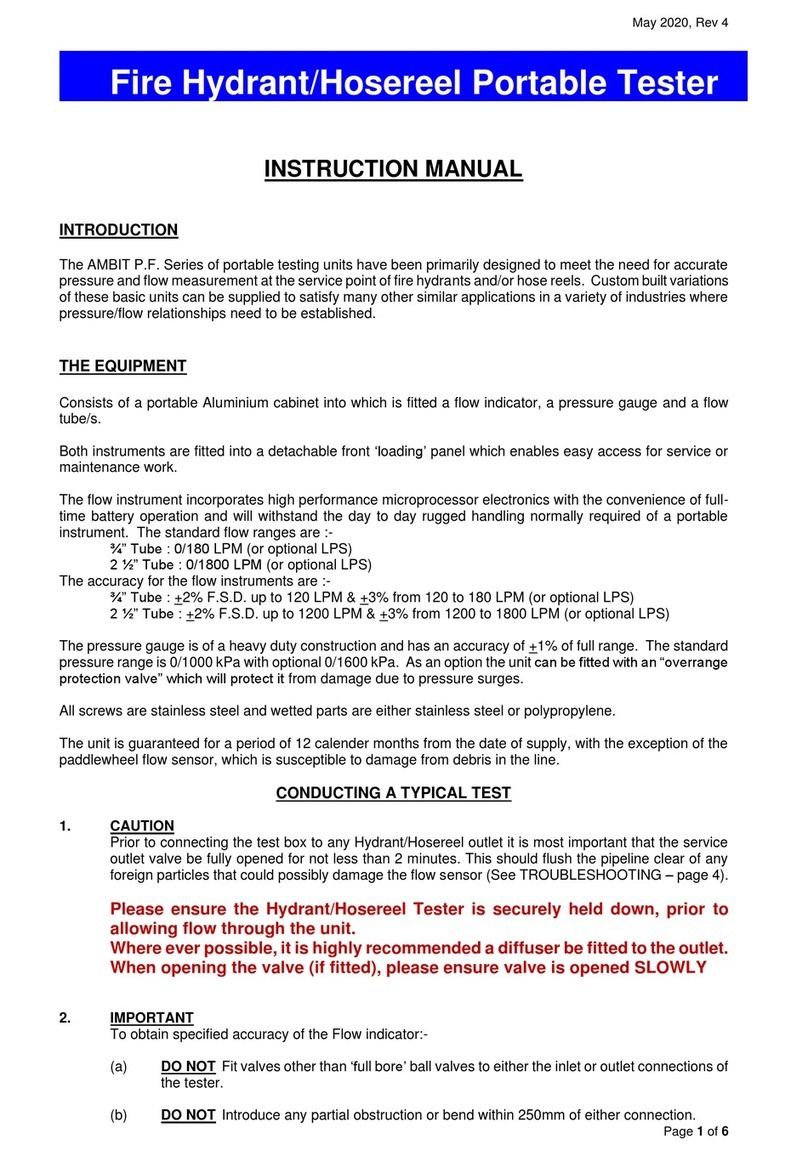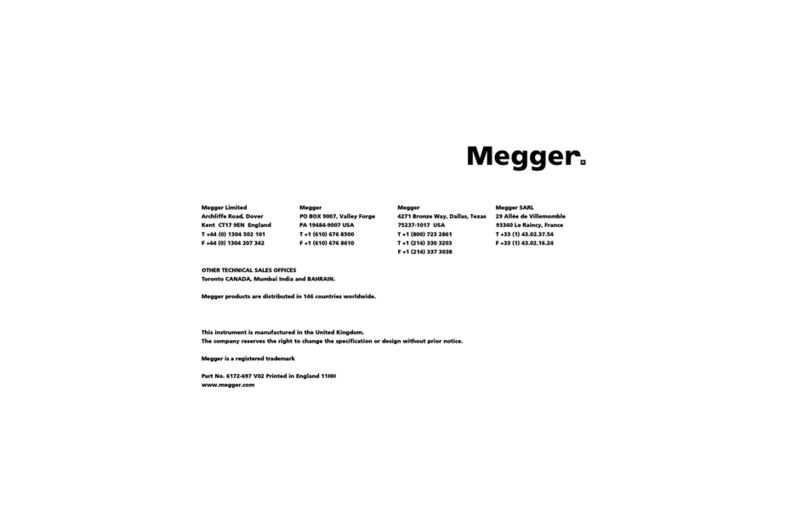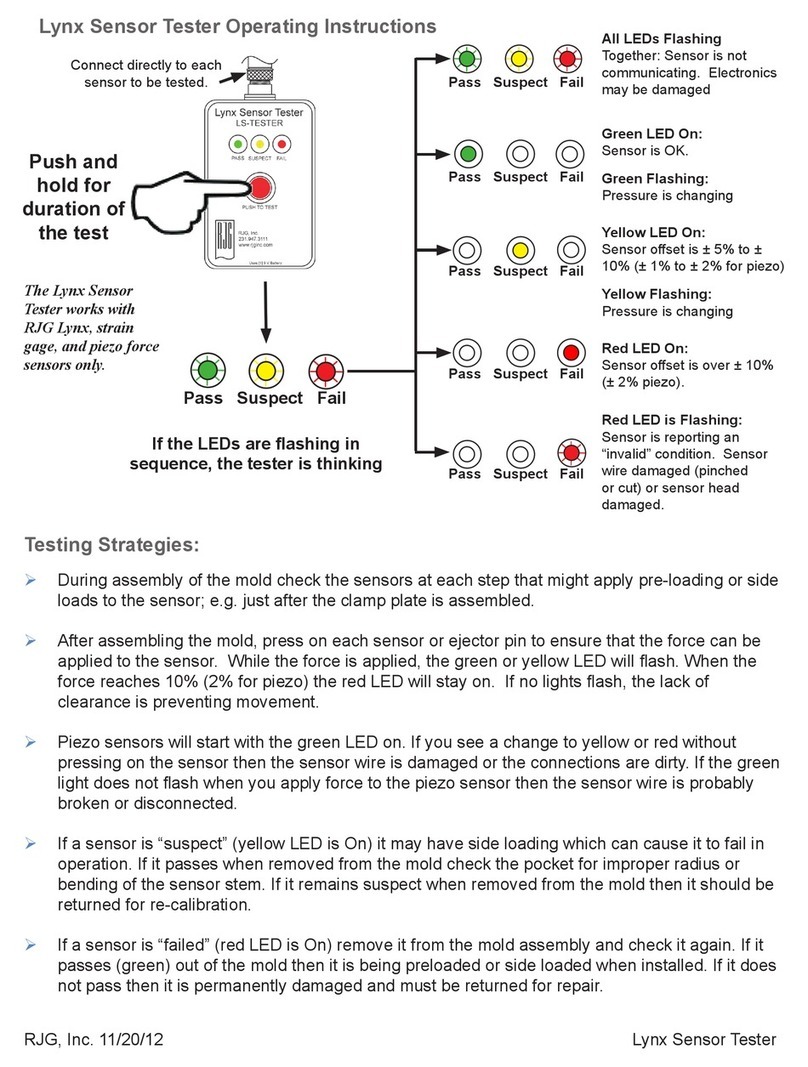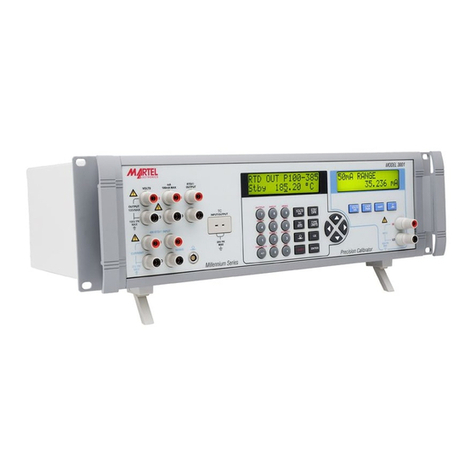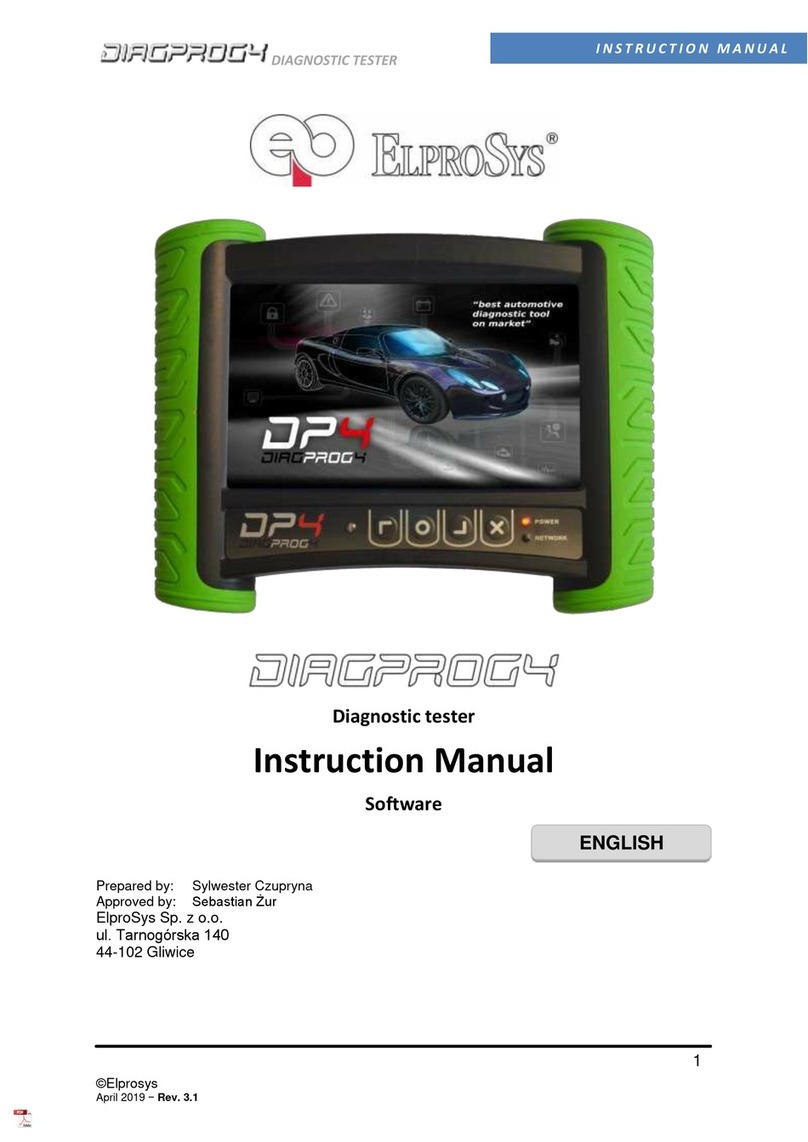
SYSTEM 2000 POLARITY CHECKER
2
Many components cause a polarity inversion in the sig-
nalPoweramplifiersarerarelyspecified for this attribute,
yet it can cause difficulty in multiple amplifier systems.
Large commercial systems that use hundreds of speak-
ers and complex wiring schema can be easily checked
in minutes instead of hours aging the Polarity Checker.
Visibly checking speaker polarity with a small flash-
light battery accomplishes little except verifying the
factory labels on the voice coil terminals. Proper polar-
ity verification requires checking the speaker wires, the
amplifier, the equalizer all the way to the deck.
Familiarization:Theoperatorshouldbe familiar with the
Checkerbefore testing systems. First you’llneed to place
a 9-volt battery inside your Polarity Checker and then
you’ll need a quiet room to make some tests.To under-
stand the concept of speaker polarity, place the Polarity
Checker on a table or counter top with the Polarity
Checker’s microphone end slightly protruding over one
edge. Press the centered “on” button and notice that the
green and/or red LEDs may blink. If the LEDs are blink-
ing,itmeansthatthemicrophoneispickinguptoo much
ambient noise to make valid measurements. Find a qui-
eter location.
Obtain a small flat object such as a book, magazine,
CD case, or a plate. Using one hand, hold the book
about 1 foot away from, and directly in front of, the
Polarity Checker’s microphone. Make sure that the Po-
larity checker’s microphone is the closest thing to the
book so that reflections will not be entering into this
test.With your other hand,sharply tapthe booktowards
thePolarity Checker’s microphone.Thegreen LEDshould
light. When the flat surface moves towards the micro-
phone, we call it a positive direction of travel. Try this
experiment again and notice that each time you tap the
book toward the microphone the green LED lights, indi-
catingthat the PolarityCheckerreceiveda positivepulse
from the book.
Now, tap the book away from the microphone, notice
that the red LED lights each time the book is tapped
away from the Polarity Checker’s microphone. When
the book moves away from the Polarity Checker’s mi-
crophone, we call it a negative direction of travel. Re-
peat the experiment and notice that each time the book
istapped away from themicrophone, thered LEDlights,
indicating that the Polarity Checker received a nega-
tive pulse from the book.
Movethebook out fartherawayfromthePolarityChecker
and repeat the experiment. Notice that as you get four
or more feet away, the LEDs no longer light. This means
that the sound energy is insufficient to measure polarity.
Althoughyoucanslamthebookhardertoforcethe LEDs
to light, reflections from the floor, walls, tables and your
body will begin to affect the measurements. It is best to
keep the microphone very close to the flat object and/or
the speaker’s cone.
Set the Polarity Checker down or the table and sing into
the microphone until the LEDs stop blinking. Notice
that approximately 5 minutes time has elapsed. This is
how the auto-off circuitry works.
Checking Polarity: Place the test software into a CD
player, set the repeat track and then use the balance
and fader controls so that only one speaker is playing at
a time. It is always best to test one speaker at a time.
Thepolaritypulses on the test softwareare recordedwith
two consecutive positive pulses immediately followed
by a single, equal but opposite negative pulse.The soft-
ware actually creates the electrical equivalent of the
book’s positive and negative directions of travel. The
timing and duration of the specially recorded pulses
makes it possible for the Polarity Checker to actually
checks itself so as to accurately verify its readings. Fol-
lowing is the order of the recorded software pulses:
Green Green Red
Green Green Red etc.
With that single speaker playing the test software, posi-
tion the microphone of your activated Polarity Checker
directly in front of the speaker’s cone. Be sure to stay
away from ports, passive radiators, and reflective sur-
faces. Adjust the volume of the speaker until the LEDs
on the Polarity Checker synchronously blink with the
sound of the pulses- Notice that you cannot easily hear
the difference in polarity, but the Polarity Checker’s cir-
cuitry measures the difference. Watch the pattern re-
peat over and over.
Let’s say that your Polarity Checker’s LED’s are blinking
Red Red Green. Well, from your familiarization session,
the reason for the reversed pattern is that your sound
system is reproducing the exact opposite of the worded
pulses. Actually your system is creating a mirror image
reproduction of all software not just our test CD. We’ll
talk more about this later. The important aspect of this
test is the repeatable pattern of either Green Green Red,
indicating a faithful reproduction of the software or Red
Red Green, indicating a mirror image reproduction
Ifthe LEDs are blinking randomlyorall Red orall Green,
then something is wrong with either the sound system,
the Polarity Checker, or the way in which you are per-




